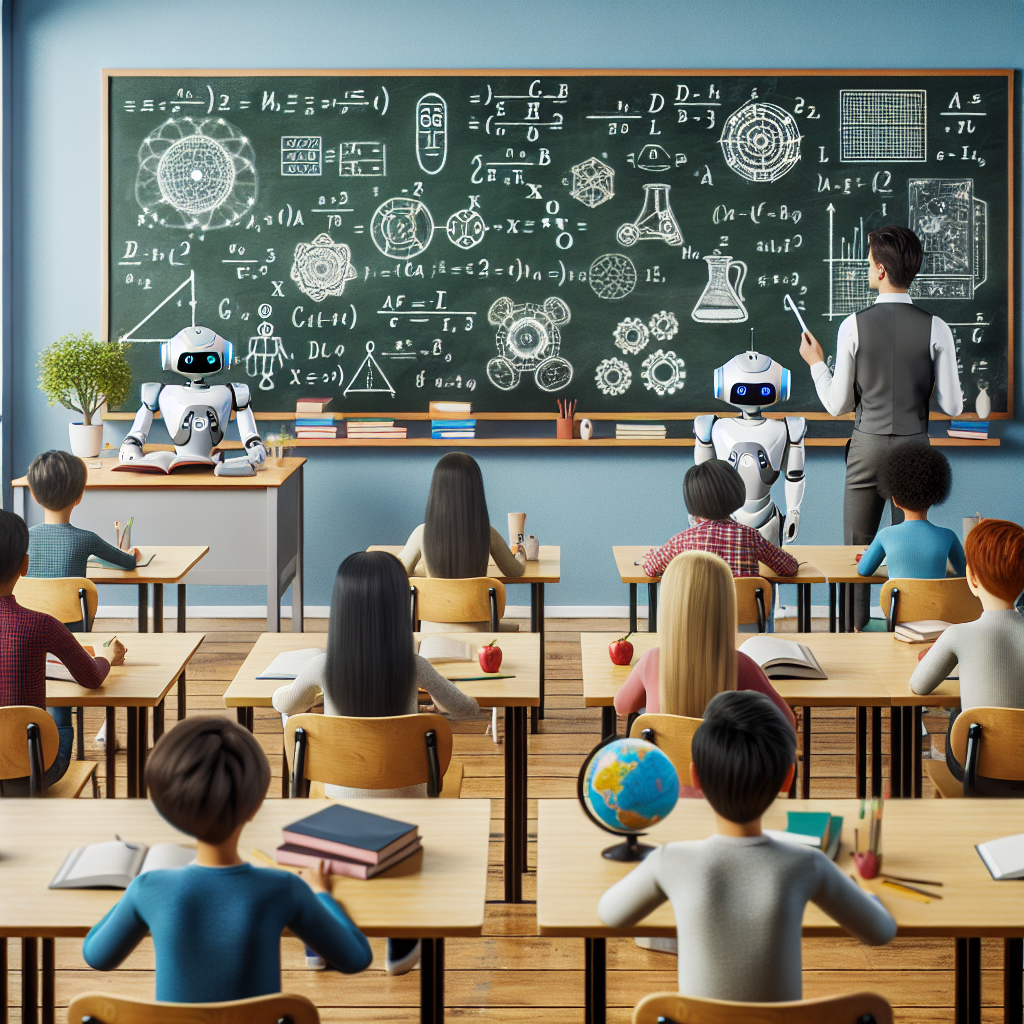Artificial Intelligence (AI) is transforming education, turning conventional classrooms into vibrant learning environments. The integration of AI technologies marks a significant shift that aims to enhance the educational experience for both teachers and students. This article examines the various applications of AI in the classroom, emphasizing its advantages, challenges, and future possibilities.
1. Customized Learning
A key application of AI in education is customized learning. AI technologies analyze individual student data, such as learning speed, interests, and areas for improvement. This allows for tailored educational experiences that cater to each student’s unique requirements. This customization may include personalized lessons, quizzes, and real-time feedback, enabling students to grasp concepts at their own pace.
Benefits:
- Increased Engagement: Customized content boosts student interest and motivation.
- Enhanced Performance: Personalized attention frequently results in improved academic outcomes.
2. Smart Tutoring Systems
AI-enhanced tutoring systems, like Carnegie Learning and Knewton, offer students immediate support outside regular classroom hours. These systems can provide explanations, conduct practice exercises, and offer instant feedback, catering to students’ needs similarly to a human tutor.
Benefits:
- Accessibility: Students can learn at their convenience, breaking down barriers to education and allowing for flexible schedules.
- Instant Feedback: Immediate corrections and explanations facilitate better comprehension of challenging topics.
3. Administrative Streamlining
Apart from classroom interactions, AI enhances administrative capabilities in educational institutions. Automating tasks like grading, attendance tracking, and resource management enables teachers to devote more time to instruction rather than paperwork.
Benefits:
- Time Efficiency: Minimizes administrative burdens, allowing educators to focus on student engagement.
- Data Insights: Schools can gather valuable insights into student performance and resource distribution, leading to well-informed decision-making.
4. AI-Enhanced Classroom Robots
AI-powered robots are emerging as interactive classroom aids. These robots can assist teachers by facilitating lesson delivery, managing classroom activities, and even engaging students in educational games. Examples include robots like NAO and SoftBank’s Buddy, which can communicate and assist in learning tasks.
Benefits:
- Engaging Learning: Robots offer a unique and stimulating learning experience that captures students’ curiosity.
- Social Development: They often encourage social skills and teamwork, especially among younger learners.
5. Language Learning Assistants
AI language learning applications, such as Duolingo and Rosetta Stone, have transformed how students acquire new languages. By harnessing AI, these tools generate personalized language exercises, frequently using speech recognition to enhance pronunciation and contextual understanding.
Benefits:
- Immersive Experience: Interactive conversations with AI promote conversational skill development.
- Flexibility: Ongoing assessments adjust challenges, ensuring students remain engaged.
6. Challenges and Ethical Considerations
Despite the numerous advantages, integrating AI into education presents challenges. Data privacy is a major concern, as AI systems often require large amounts of student information. Additionally, there is a risk of fostering dependency on technology, which might undermine traditional teaching methods.
Key Considerations:
- Equity: Ensuring equal access to AI tools is crucial to prevent widening the educational gap among students from various economic backgrounds.
- Teacher Roles: Introducing AI should complement, not replace, teachers, creating an environment where both AI and educators play vital roles.
7. The Future of AI in Education
Looking forward, the role of AI in education is set to grow. Advances in machine learning, natural language processing, and augmented reality could lead to even more sophisticated tools that could revolutionize educational methodologies. As AI continues to evolve, it has the potential to enhance learning outcomes and equip students with essential skills for a technology-driven future.
Conclusion
The incorporation of AI in the classroom offers numerous opportunities and challenges. As we delve into the various applications of AI—from smart tutoring systems to classroom robots—it is vital to implement these technologies thoughtfully, promoting equitable education while keeping educators at the forefront of teaching. Through responsible integration, AI can unlock new learning possibilities, paving the way for a brighter educational future.

